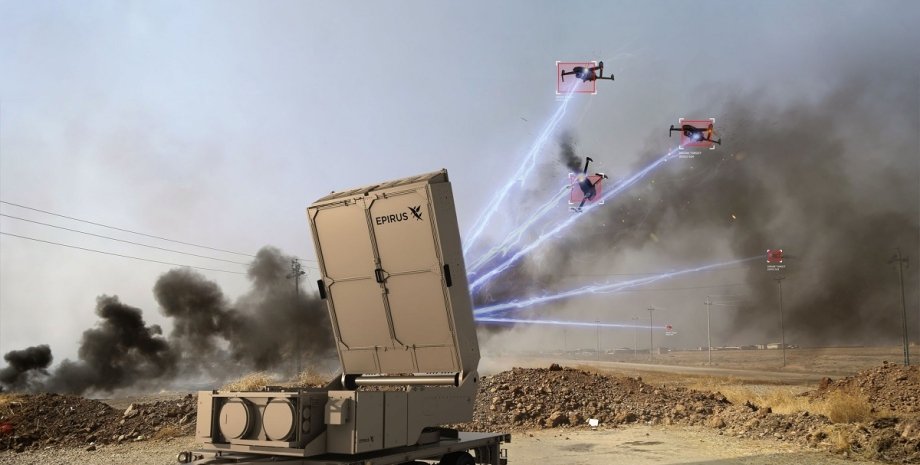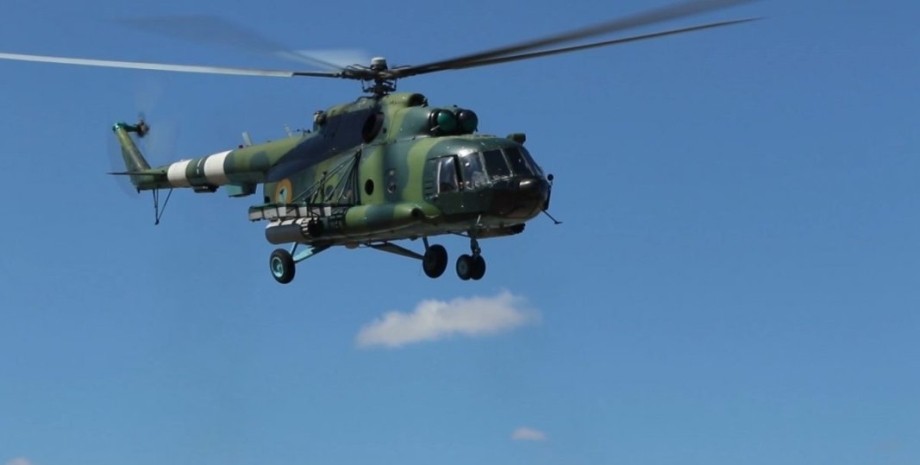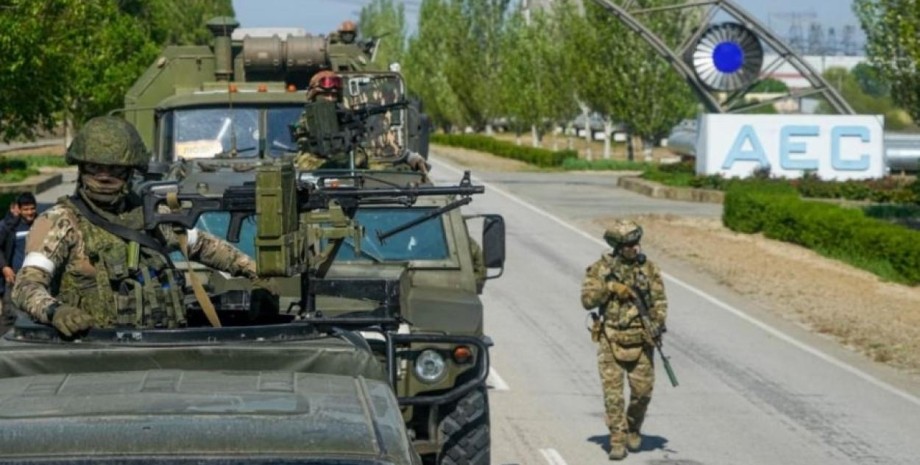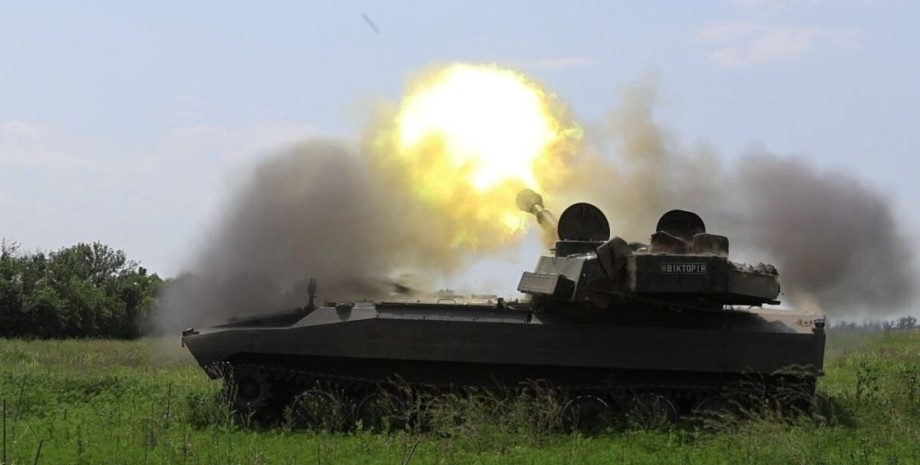
However, the Fighters of the Armed Forces, as well as in the armies of the Union countries, have more powerful and effective weapons to combat the UAV of the enemy. The focus will tell you how the weapon works and what the weapon is against drones. Before whisking the UAV, it must be recognized and traced.
For this purpose different devices are used, which are divided into passive (observation, listening) and active ("feel" the target by means of departure-perception of the signal), as well as multifunctional, capable of detecting drone, classify and identify it, search and track it , notify the approaching threat. Those devices that are able to classify drones are equipped with technologies that allow them not to confuse drone with birds, aircraft and other objects.
Some equipment is able to identify a specific drone model or even identify the "digital imprint" of the device/controller, such as the MAC address (a unique identifier that is assigned to each unit of equipment connected to the network-ed. ). Let's talk more about such equipment. The technique has several antennas for receiving radio signals and a processor for analysis of the radio frequency spectrum. Its main task is to detect radio communication between the drone and its controller.
Some systems are capable of identifying the most common brands and UAV models, and some can even identify the Mac addresses of both devices if Wi-Fi is used for communication. This function is useful if law enforcement officers need to prove in court that a specific drone and controller were active.
RF analyzers are relatively inexpensive, can find several drones at once, do not require a license, some models are able to determine the position of the object in space, but do not always work correctly, especially in active radio frequency zones, effective in short distances. This type of technique is equipped with many microphones. They fall in the sound of the drone and signal the direction in which direction it flies. More advanced devices can even determine the coordinates of the copter.
The advantage of acoustic sensors is the ability to find autonomous UAVs, that is, those that send and accept radio signals. Often, sensors are used in bad weather conditions when visibility is unsatisfactory. For the military acoustic sensor, it is good because it unfolds, but bad in conditions of strong noise, and its "long-sightedness" leaves much to be desired: 300-500 m.
However, when the Armed Forces of the Russian Federation uses "Shahidi"-microphones are not needed because The engine is noisy quite loud. At the end of last year, the establishment of acoustic sensors was announced in the Kyiv region to increase awareness of threats from the air. Also, Ukrainian experts have developed a "sound" system specifically for tracking drones and missiles that produce the Armed Forces of the Russian Federation in the territory of Ukraine.
The military is mainly used by infrared and thermal imaging sensors, who will find a hostile copter in the dark and will be able to show what "stuffing" he carries. It was thanks to thermal imaging chambers that our fighters have repeatedly calculated Russian shock drones. Fog, rain or snowfall can be an obstacle to such sensors. The equipment works simply - sends signals for all 360 degrees, they "hit" the objects and go back, the radar accepts them and decrypt them.
Yes, soldiers can understand at what distance and in which side there is a probable threat. The radars have a very long range, but most of them are sharpened in search of large devices such as aircraft and helicopters. But if the UAV is large enough, then it is not a problem. Plus, the device can detect tens and even hundreds of objects, and it does not matter whether it is good or not, day or night.
The so -called Doppler radar distinguishes between the speed within the movement of one or another goal, that is, the drone it can "recognize" due to the rapid propellers. In this way, the radar is easier to distinguish the UAV from the bird. The Armed Forces are armed with British radars from Blighter Surveillance Systems with powerful antennas that are two tens of kilometers. The devices are able to fix a maximum of 700 goals at the same time, while clearly recognizing them.
Antironoon weapons are also different types because its functionality is different. There are devices aimed at neutralizing the drone, its complete destruction, or getting control over it. In this article, we will not consider technology such as the capture of the drone with the help of nets, since it is not used on the front. Also, the method of intercepting commercial small quadcopters with specially trained predatory birds does not work.
The technology allows you to "deceive" the drone in order to intercept control over it. The RF-Bader sends a signal that is more powerful than the controller's signal but is identical to him. The UAV switches to a more powerful wave and then it can happen to it: the operator intercepts control and controls it, the device falls, the device flies back, flies in an unknown direction. The mufflers can not boast a large radius of action, can also work like a RB and interrupt their connection.
Country defenders actively use Dedrone mufflers who can "beat" GPS satellites, Russian Glodas system, Chinese Beiduo, European Galileo, working as discharges (we will talk about them below). Dronedefender models allow Ukrainians to intercept the control of UAVs of Russian troops. As you may have guessed, this device "replaces" its signal, which the drone receives from the GPS satellite (if such a system is used for navigation).
The devices set other coordinates and it flies in the appropriate direction. The downside is that the operator needs to be as close as possible to the object. And the devil's signal is able to silence others, which can interfere with the military, who are in different positions, to communicate with each other. Lithuanian antironous rifle EDM4S Sky Wiper from NT-servise is a good tool in the fight against air purposes.
Powerful radio signals, which spread to 5 km, the installation can "land" a small UAV, creating strong obstacles. Here we got directly to antitrone weapons. So what does she shoot? Electromagnetic (microwave) installations work as follows: the device generates a strong electromagnetic pulse of the NVC band (0. 3-300 GHz), if in its area of action there is UAV, it will immediately fail.
The fact is that the electromagnetic impulse is not only able to cause obstacles (then the drone can simply fall to the ground, but its electronic "stuffing" will remain intact), but also destroy the electronics by increasing the current. Then the "stuffing" will just burn. Using such a weapon, you need to make sure that the pulse is directed accurately, otherwise another electronics may also suffer. The US Army will soon appear Leonidas from Epirus.
It will cost a pentagon $ 66 million, but they will not buy in the department because they intend to improve their anti -missile defense system. Laser antitrone weapons focus and shoots a laser beam, which, as in the case of microwave weapons, "fits" the drone inside, neutralizing it. Such devices are designed by Lockheed Martin and Raytheon. Lockheed Martin and Rafael (Israel) are also known.




















Všetky práva vyhradené IN-Ukraine.info - 2022